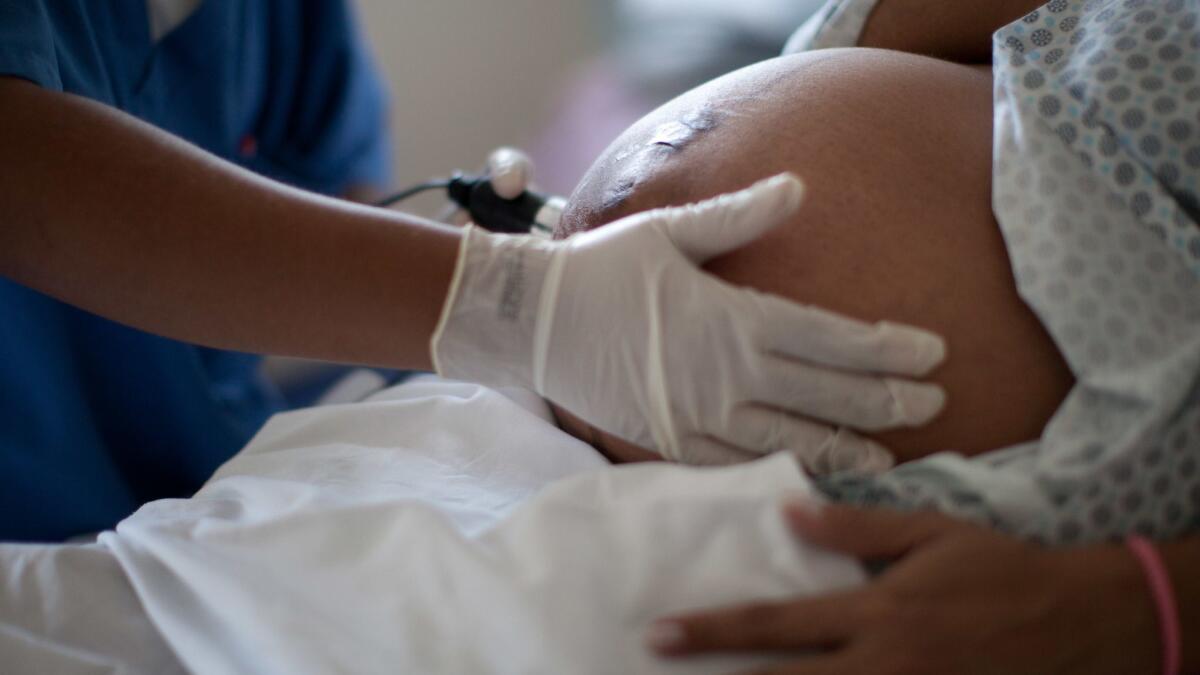Readers React: How the greater use of machines in medicine results in too many C-sections

- Share via
To the editor: As Jacqueline H. Wolf points out in her op-ed article on the high C-section birth rate in the United States, there is no evidence-based difference between regular checking of the fetal heart rate with a fetoscope compared with continuous electronic fetal monitoring. In fact, in our midwife-physician collaborative practice, “intermittent auscultation” is encouraged for low-risk, normal labor.
The problem is that a fetoscope works only when it is attached to the head of an actual person, namely a nurse. To have enough staff to enable nurses to listen, every 30 minutes, to the fetal heart rate of numerous laboring patients would probably be considered cost-prohibitive for most hospitals.
Replacing people with machines to save money is as prevalent in medicine as in other fields, but sometimes with much more significant consequences.
Laila Al-Marayati, MD, Los Angeles
..
To the editor: As one of those obstetricians who trained before and after fetal monitoring machines arrived, I agree with Wolf. I spent many hours with the nurses documenting fetal heart tones every 15 minutes.
With the use of the computers and electronic fetal monitoring and displays at every possible location in labor and delivery wards, and with monitors attached to patients even as they walk around, the C-section rate is indeed increasing. With so much data, there is more fertile ground for any untoward outcomes in terms of malpractice lawsuits, thereby increasing the number of C-sections out of fear.
Michael L. Friedman, MD, Torrance
..
To the editor: Three years ago, as we waited at a Kaiser hospital for the birth of our first grandson, we were dismayed to see our daughter being rushed to the operating room for a C-section. She’d been in normal labor for 20 hours, progressing gradually toward a full-term delivery, when the monitors abruptly showed problems with the baby’s heart rate.
Our grandson’s skin was blue upon delivery, and he had an Apgar score of 1, indicating a very high risk of infant mortality. He was rushed to intensive care, where he recovered fully. Now he is a delightful 3-year-old.
No, the monitors didn’t prevent the need for intensive care or yield a higher Apgar score, but if his problem had gone undetected for “30 minutes or so” as labor slowly progressed, I feel a C-section would have been too late to prevent serious damage.
Ed Schlipf, Lancaster
Follow the Opinion section on Twitter @latimesopinion and Facebook
More to Read
A cure for the common opinion
Get thought-provoking perspectives with our weekly newsletter.
You may occasionally receive promotional content from the Los Angeles Times.








